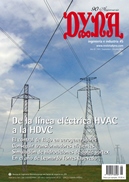IMPROVEMENT OF A PELTIER HVAC SYSTEM INTEGRATED INTO BUILDING ENVELOPES IMPLEMENTING BEEHIVE STRATEGIES: A THEORY-BASED APPROACH
Keywords:
thermoelectricity, energy, facade, stigmergy, biomimicry, automation, termoelectricidad, energía, fachada, estigmergia, biomimetismo, automatismoAbstract
The article proposes new ways of work to redesign previous Peltier cells prototypes and empirical studies, using biomimicry methodologies. Biomimicry can be a source of fresh ideas to solve contemporary and unexpected problems. Also in terms of energy saving and efficiency, animals can be of aid. Ectotherms, animals that depend on external factors to be in a range of 'living temperature', have developed strategies to survive and adjust their metabolism regarding the environment and weather conditions. Social insects are ectotherm animals. One specimen of these species cannot be autonomous and would die if he is out of his nest for a long, or even, short time. Previous studies made about bees behaviour in beehives show up an automated and accurate work to maintain nest temperature. This organized way of working has been translated into Architecture and building services, improving an autonomous HVAC system integrated in facades, based on Peltier cells, mimicking individual bees which can supply energy on their own, and emulating the stigmergy strategies existing in Nature.Downloads
Published
2016-09-01
Issue
Section
ARTICULOS

